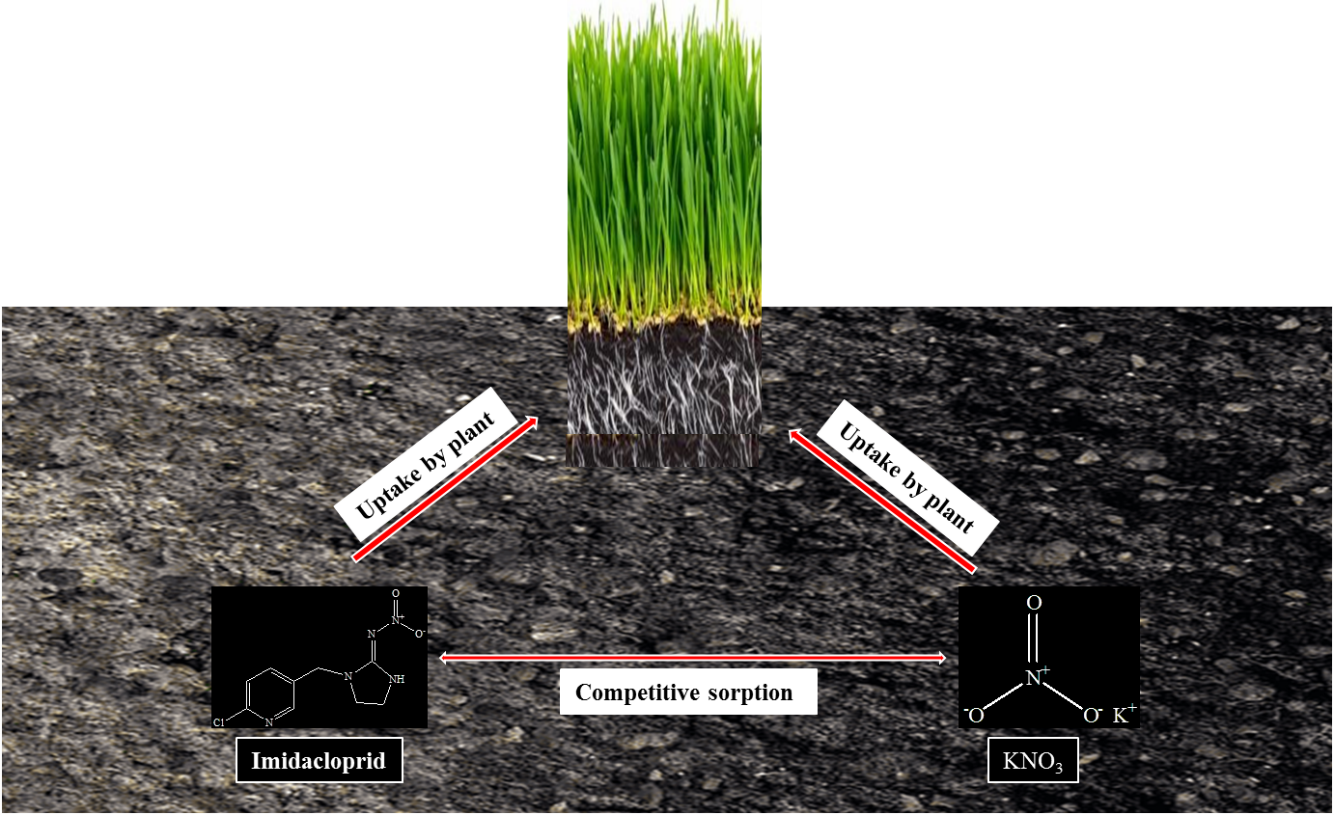
The non-competitive and competitive adsorption/desorption of agrochemicals into soil plays an important role in the fate and behaviour of contaminants in the environment. Non-competitive and competitive adsorption/desorption experiments of imidacloprid and KNO3 into alluvial soil and sandy soil were performed via batch experiments. Non-competitive and competitive experiments showed that imidacloprid was the most strongly adsorbed and desorbed from KNO3 in both tested soils. The adsorption of imidacloprid and KNO3 was greater in the non-competitive experiments than in the competitive experiments, as their presence together reduced the chances of association with the adsorption sites in the soil for each of them individually. The adsorption and desorption of imidacloprid were greater than those of KNO3 in the two soil types. The KNO3 adsorption was greater in the alluvial soil than in the sandy soil, and vice versa or imidacloprid. The best fits were obtained with the Langmuir model. The data showed a reduction in the relative root and shoot elongation percentage for wheat plants when imidacloprid was combined with KNO3 or imidacloprid alone. On the other hand, the use of KNO3 fertilizer alone resulted in a significant increase in root and shoot length.
Total file downloads: 15